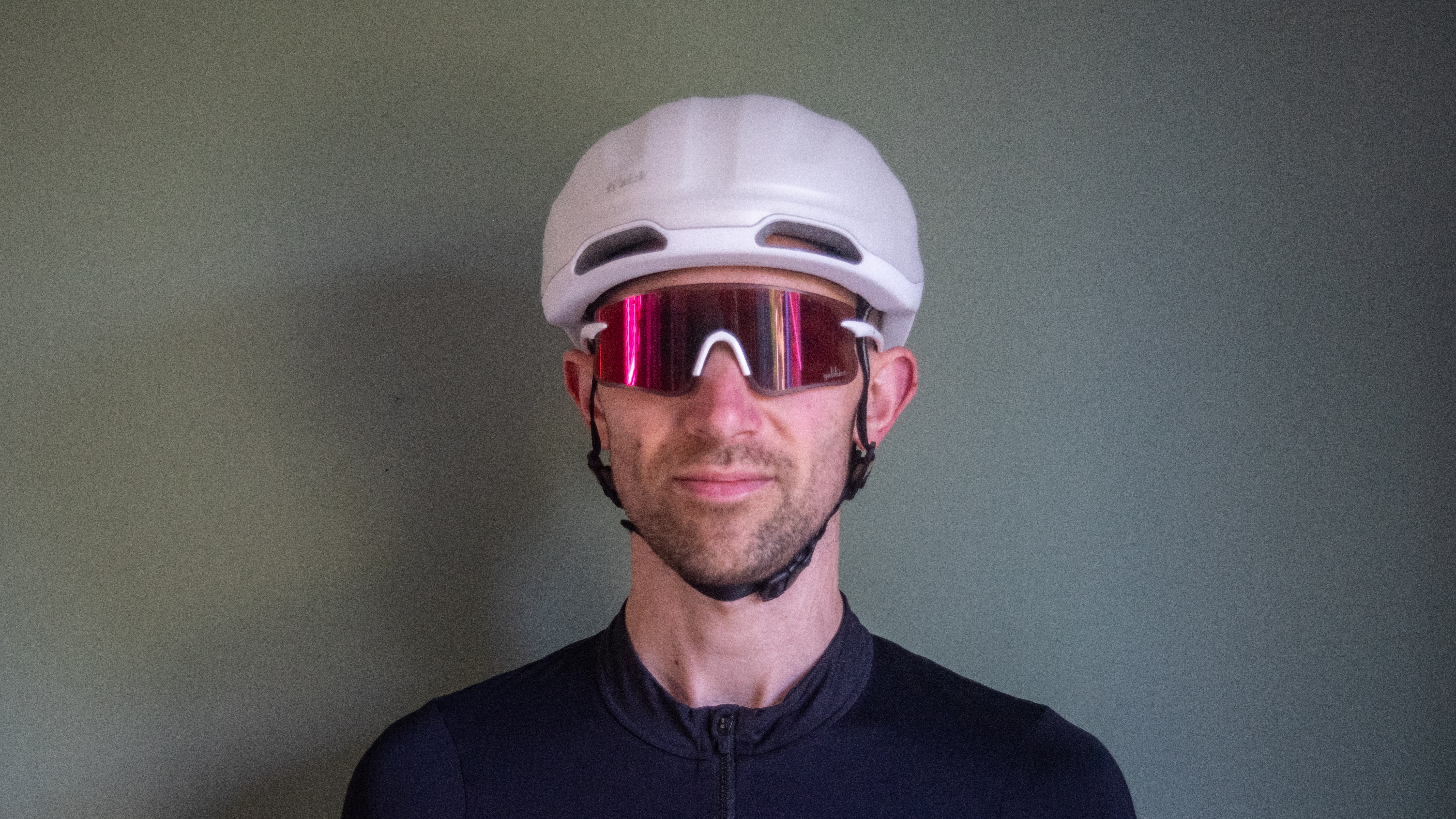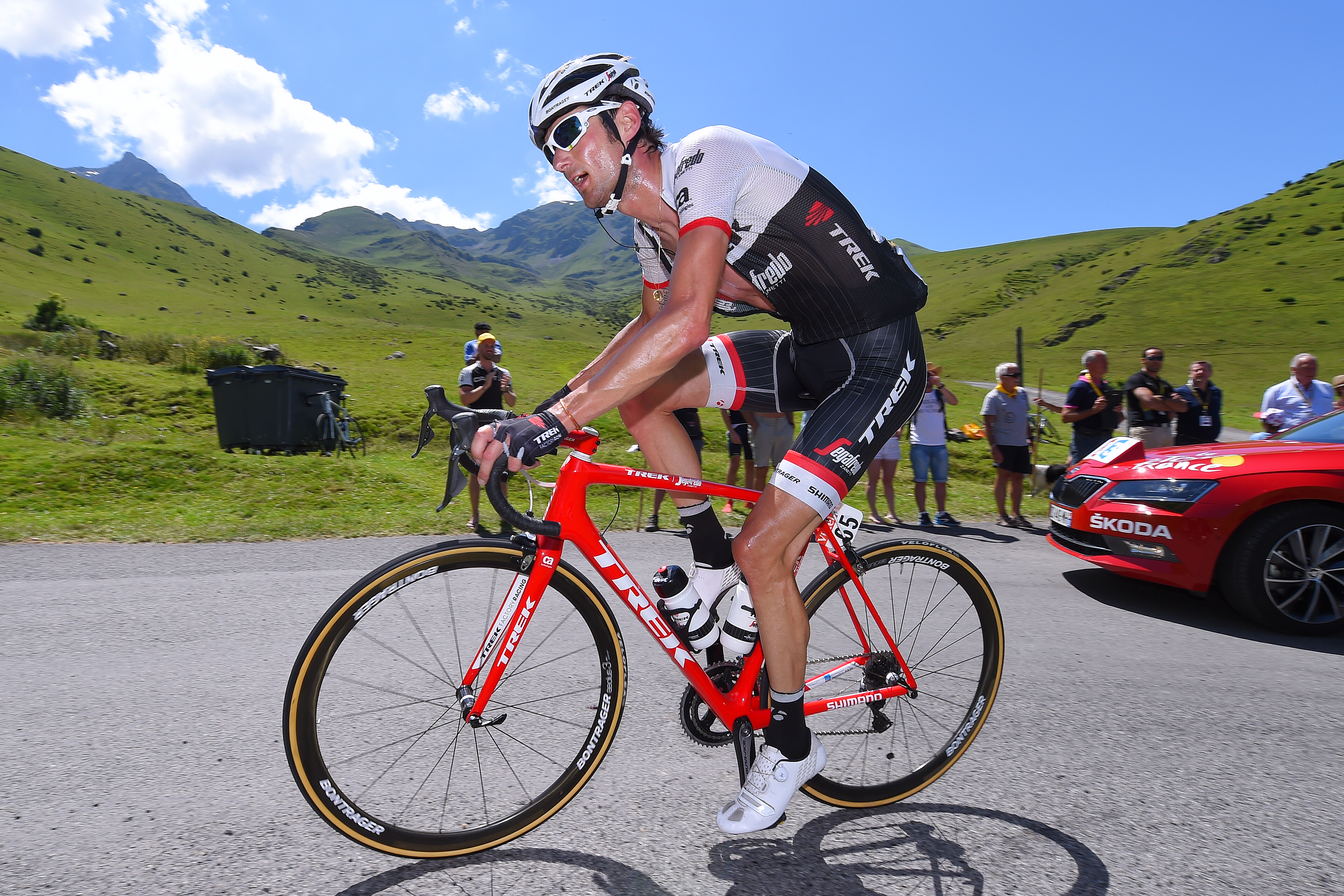Cyclingnews Verdict
I really like wearing the Kudo Aero; it's highly comfortable, and the fit is great. I like the MIPS and Virginia Tech safety credentials, and the integrated light is very good. I have run into one small issue with it, and I think performance riders may want to know how quick it truly is before committing.
Pros
- +
Stylish design and colours
- +
MIPS tech
- +
Good Virginia tech rating
- +
Light design and battery is very good
- +
Very comfortable
Cons
- -
A little too warm on muggy and hot days
- -
Some issues with the light/reflector fit
You can trust Cyclingnews
Price: £269.99 / $319.99 / €290
Colours: White / Black / Silver
Sizes: S/M/L
Weight: 280g Size: small
Safety tech: MIPS Air Node / Light and Reflector
In April, Fizik launched its first-ever, four-model strong helmet range. Adding to its core lines of shoes, saddles and accessories. The new helmet range comprises two road helmets, which sit alongside a time trial and an MTB helmet.
Since just before launch, I’ve been riding exclusively in the brand's all-out aero road model, the Kudo Aero. The Kudo Aero was the most attention-grabbing option to me personally, and the model I was most eager to test. There are several interesting features, and it ticks a lot of the boxes needed from the best road bike helmets right now.
Could it also end up joining the ranks of the best aero helmets?
I discuss the helmet's features in depth further down, but the topline is that this is an aero-focused road helmet with a largely enclosed aero shell, which has a peak at the rear to aid airflow leaving the helmet. In addition, there's a MIPS Air Node rotational impact system, a Virginia Tech 5-star independent safety rating score, an integrated, interchangeable, rechargeable light and reflector and more.
I’ve had a good test experience. Though there are a couple of elephants in the room that at least need to be discussed, but I think Fizik has made a positive overall entry into the helmet market.
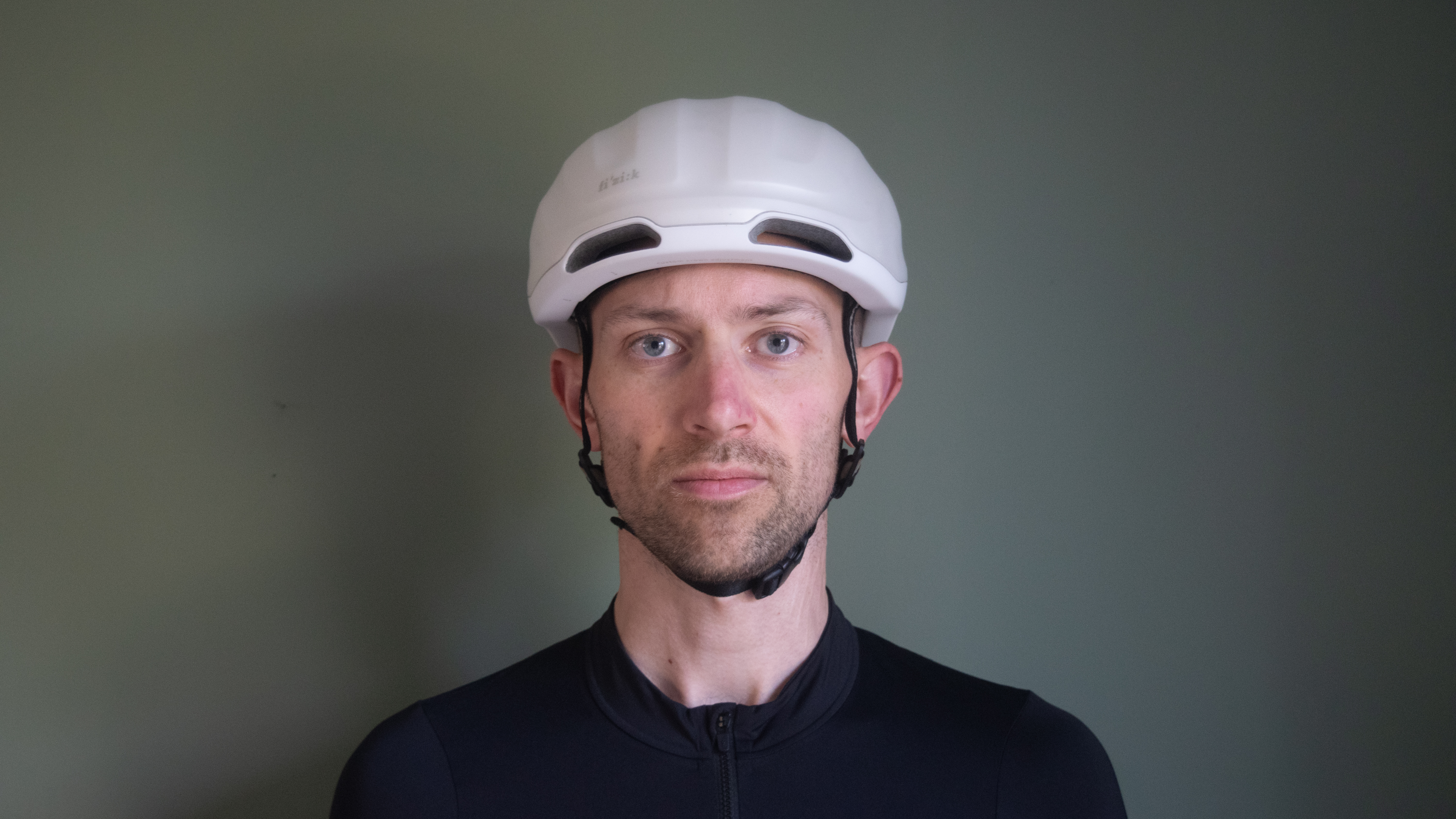
Design and aesthetics
Out of the box, which is all largely recyclable, the Kudo Aero comes with a nice soft storage bag and a few accessories, which all come in a brown paper envelope.
There are six fit-adjust inserts for the 'crown adjust system'; small plastic inserts that allow you to tailor the fit around your head. There's also a cutout at the rear of the helmet that allows you to insert either a neat rechargeable light, a reflector, or just a blanking plate. It's a neat design that should boost visibility and add some value on lighter nights when you might not have a light on the bike and are riding home as evening falls.
The latest race content, interviews, features, reviews and expert buying guides, direct to your inbox!
The helmet is available in three colours: black, silver and white, and features a few Fizik wordmarks and bits of branding. There’s a neat ‘Fizik’ wordmark on the left-hand side of the shell and again at the front, and a Fizik ‘K’ on the right.
At the rear, there are some stats on the helmet. It’s minimal, though, and it’s a good-looking helmet for me. The shape is noticeable on its own, and adding tonnes of logos - and there’s plenty of real estate for them on this model - would be overkill. It should go well with a range of kit and bikes, and doesn’t look too bulbous or oversized due to the lack of vents.
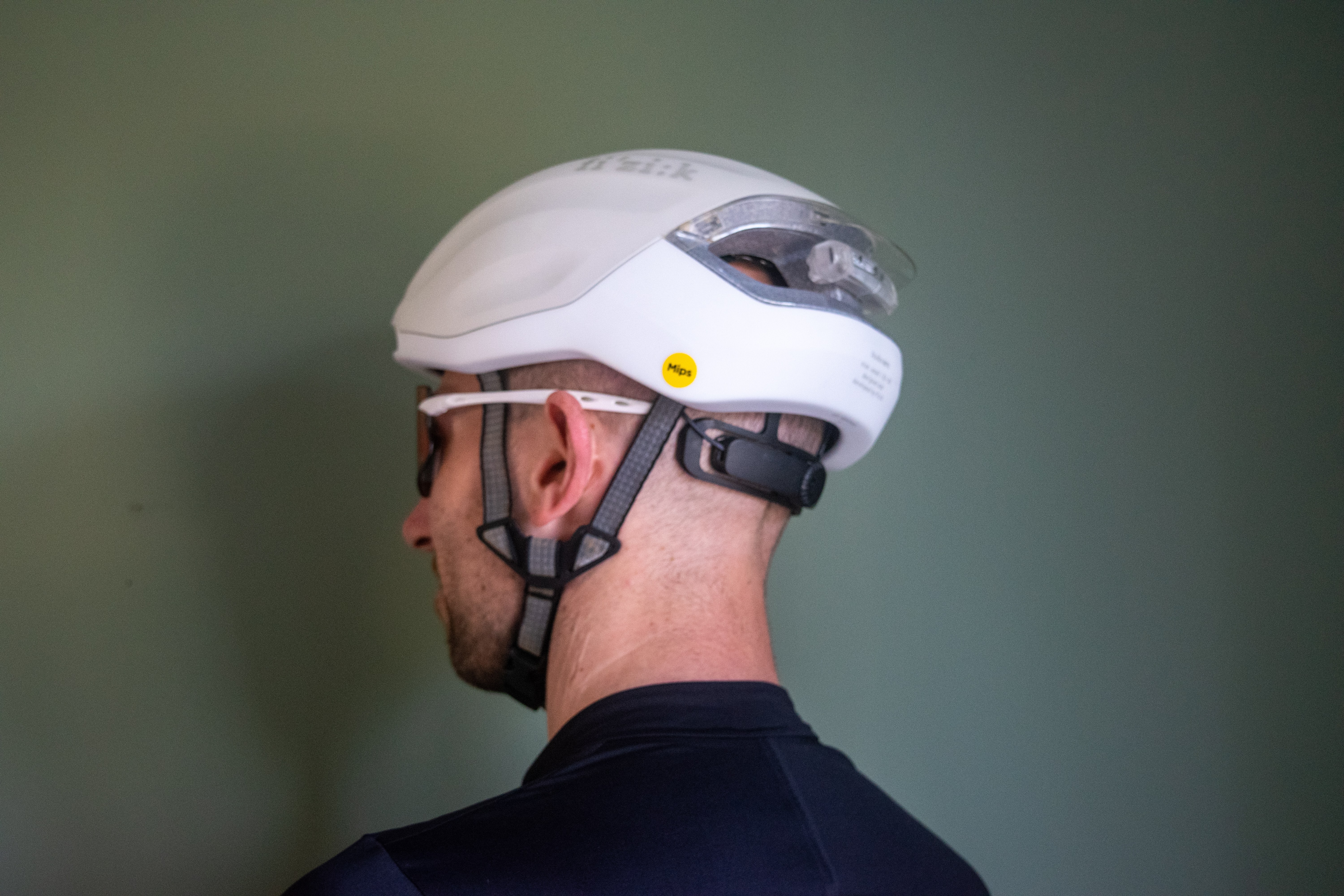
This is an aero model, and as such it uses minimal venting. There are just two small front vents, so you can't store your glasses anywhere but behind your neck or in your jersey. The helmet's design is very similar, nearly identical looking in fact to the regular Kudo, but it uses an aero shell on top. At the rear of the helmet is what the brand calls the ‘breakaway spoiler’, which is said to delay airflow separation from the shell of the helmet to boost aero performance.
On the topic of aero, Fizik doesn’t make any claims about the aerodynamic performance of this helmet, so I have nothing to tell you there. I asked, and the brand explained that helmet performance can vary a great deal depending on individual riders and positions. I’d hope the brand is confident that the model is competitive after designing the thing and maybe doing CFD simulations, but they chose not to quote any figures or performance results.
We will aim to take this model to the wind tunnel ourselves when our next CN Labs helmet test comes and will attempt to pit it against some of the fastest known models on the market, like the popular Specialized S Works Evade III, Scott Cadence Plus and Van Rysel FCR.
For now, it’s generally acknowledged that a filled-in aero shape like this can be faster than a highly vented model. How exactly it performs on a rider will hopefully be revealed in the future, and we will know how the Kudo Aero compares to the best aero helmets.
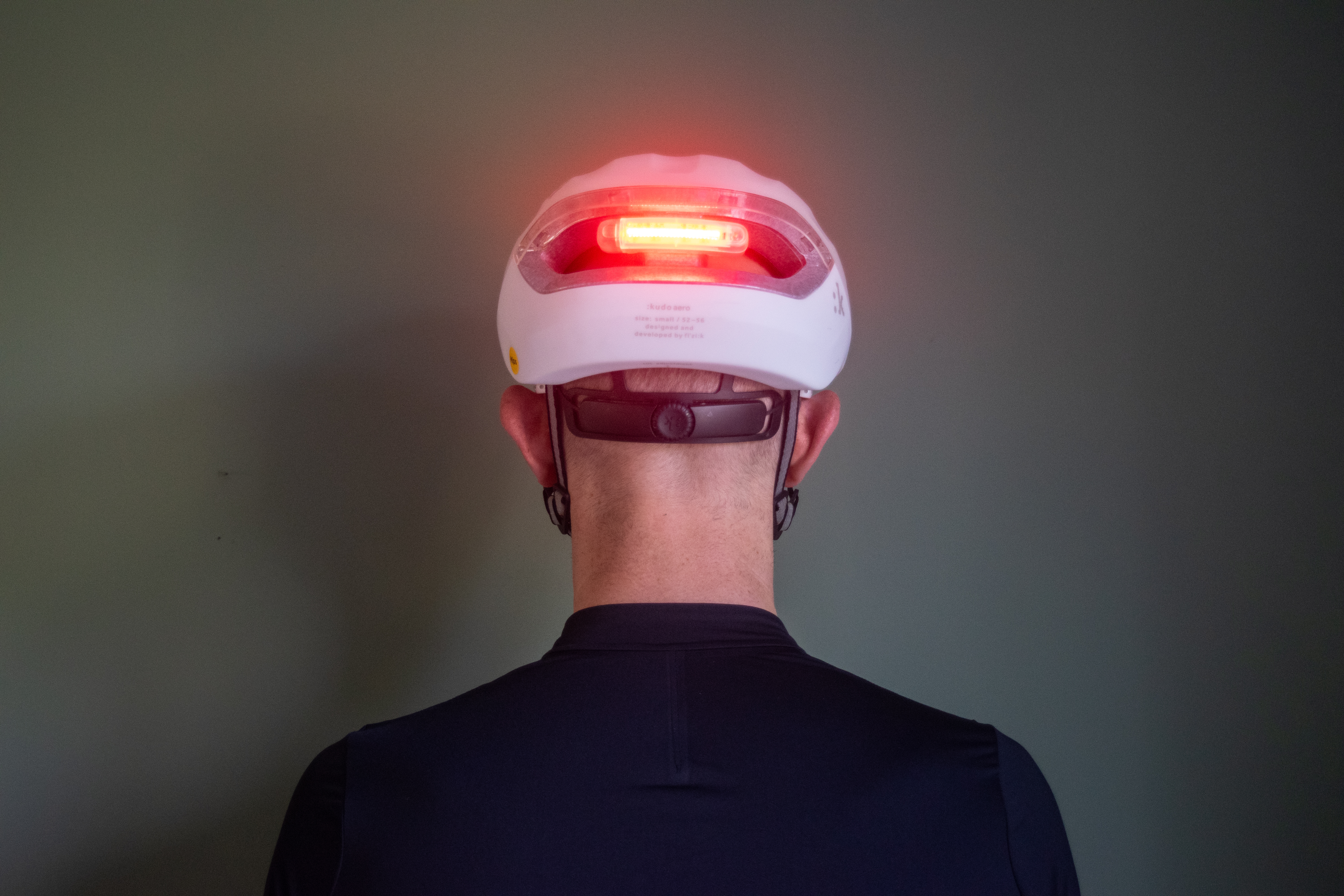
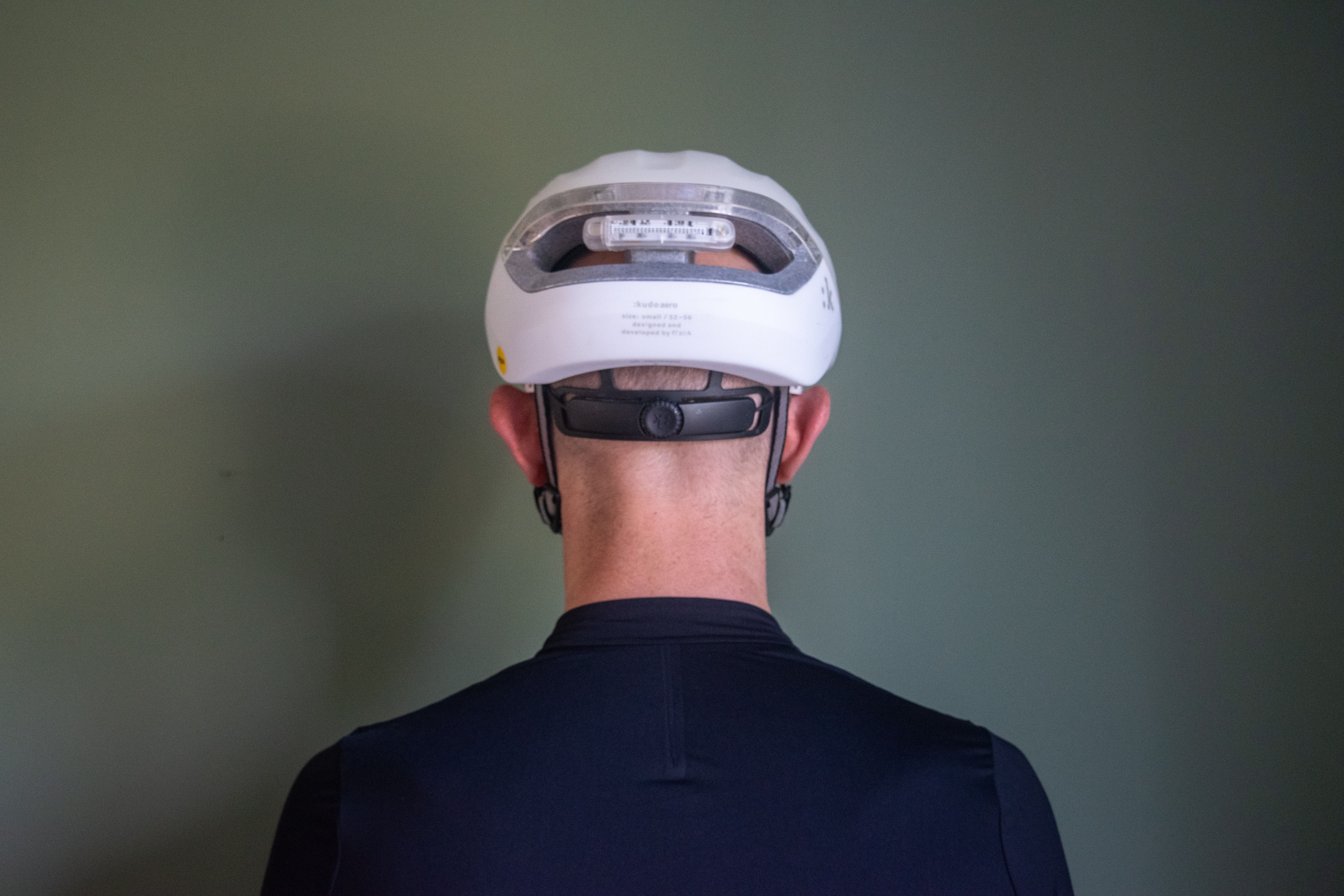
Helmets are first and foremost for keeping us safe, and in this area the Kudo Aero stands up. The helmet meets EU and CPSC (Consumer Product Safety Commission) standards, and like most helmets, the brand recommends replacing this one after five years.
There's a MIPS Air Node (Multidirectional Impact Protection System) anti-rotation liner system to reduce the threat of head impact in the event of a fall, and the helmet has already attained a five-star Virginia Tech rating, a nice box tick for a new entry into the premium helmet category.
An interchangeable light and reflector also bolsters the safety offering. Each can be pushed into a slot at the upper rear of the helmet. The light itself is very neatly designed with a small, neat body with a magnetic cap over the USB-C male charger, which you will need to plug into a plug or device to charge. The light has a 35 lumen rating and a 3-hour run time on flashing and 1.5 hours on constant.
The helmet straps externally are a light silver grey colour and are constructed from ripstop material, which is generally used as a tough and durable fabric. They aren't the softest on the outside, but against my skin have been perfectly comfortable. The grey may get dirtier over time compared to black though, and may need a scrub.
Lastly, the position of the Fizik retention system dial can be moved fore or aft using some plastic tabs
Performance
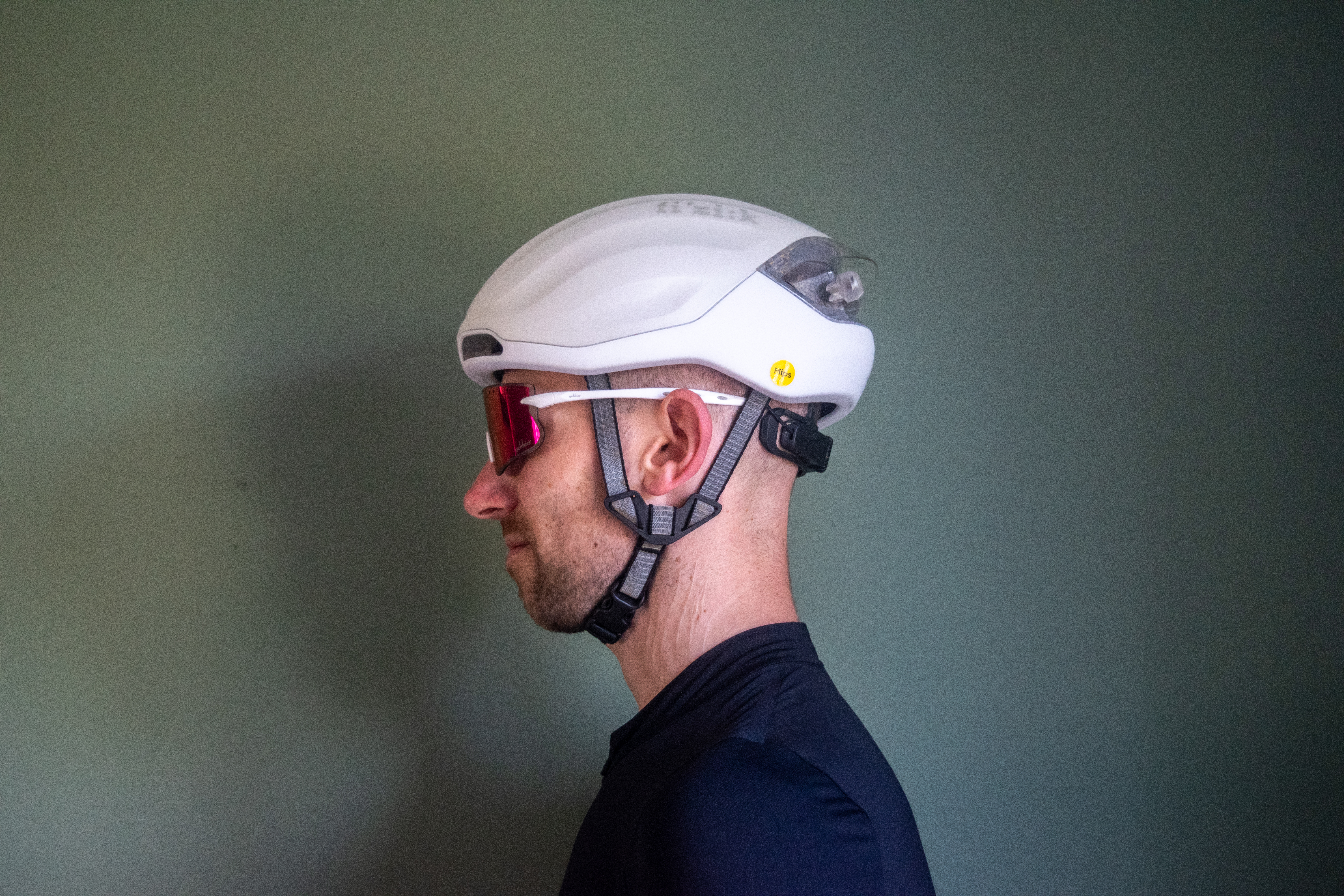
Comfort has been excellent in this helmet. I felt very good in it straight away and didn’t have to to-and-fro with the fit much, despite the additional adjustability on offer.
The hold is comfortable and secure, with even pressure when tightened and no tight or niggle spots. I’ve been testing a small, but do check the size guide though before you buy. The helmets came up pretty small for two of my tech team colleagues with larger heads than mine.
On muggy and humid days, I have suffered a little in the helmet, sweating a lot and generally feeling the heat a bit more than usual. It’s not a model for the hottest days or with lots of slow-speed climbing.
The brand states the two front vents and rear heat extractors will be enough to keep you cool, but there doesn’t seem to be a specific route for air once it’s entered the helmet, and I’ve ended up with condensation on the inside of the shell in the heat. It’s not going to keep you as cool as something like the Specialized Prevail 3 on the hot days, so bear this in mind, especially if you feel the heat from certain helmets.
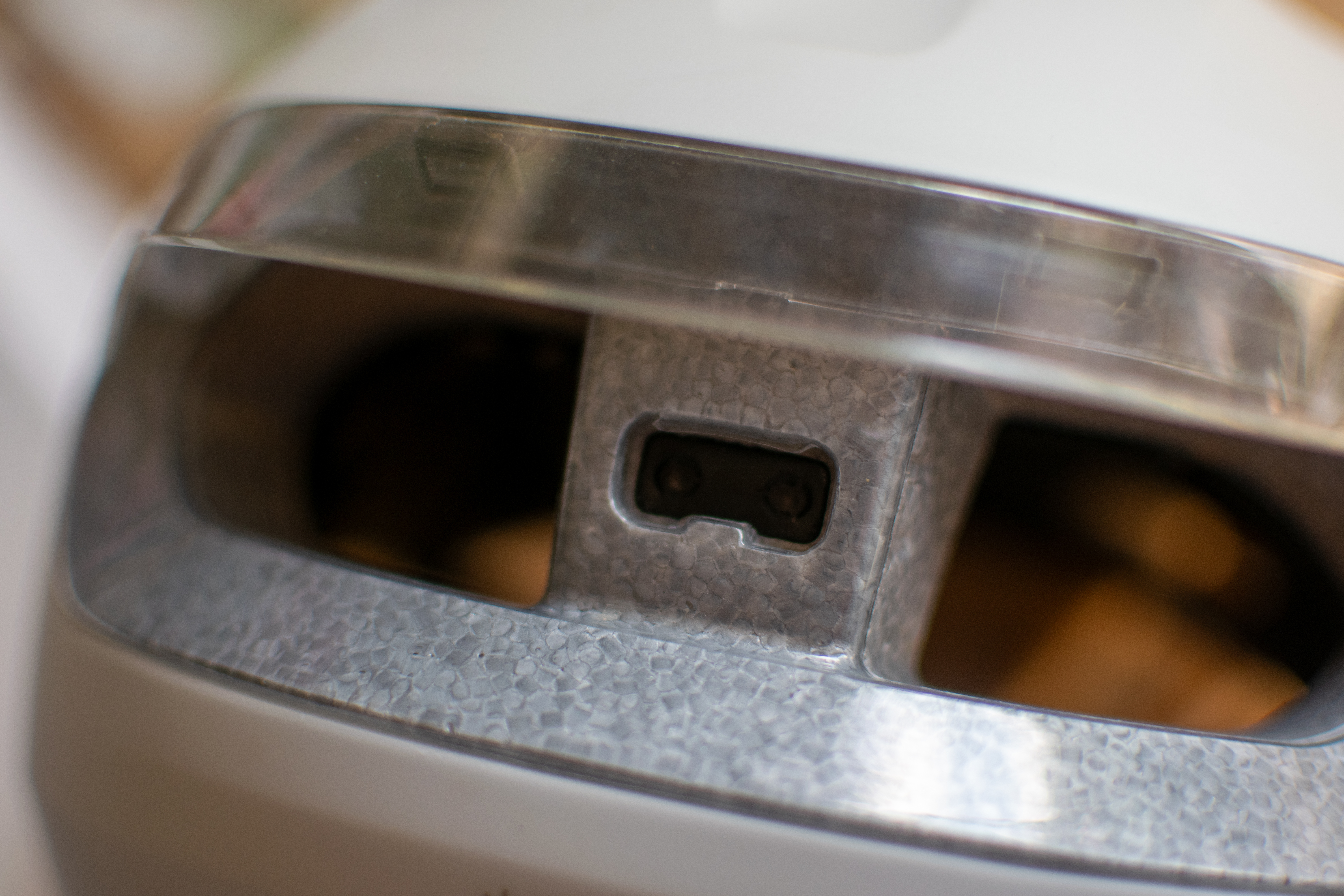
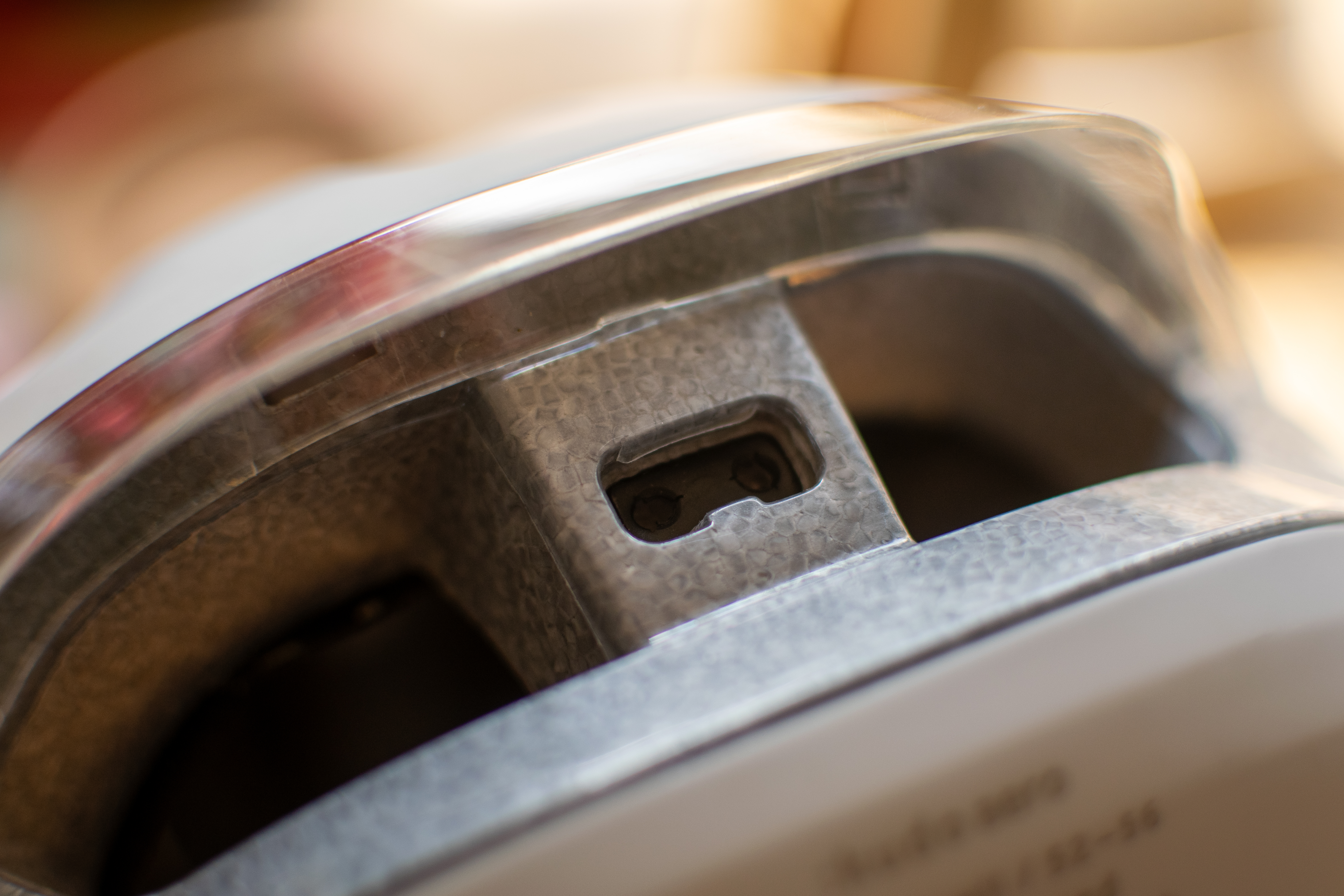
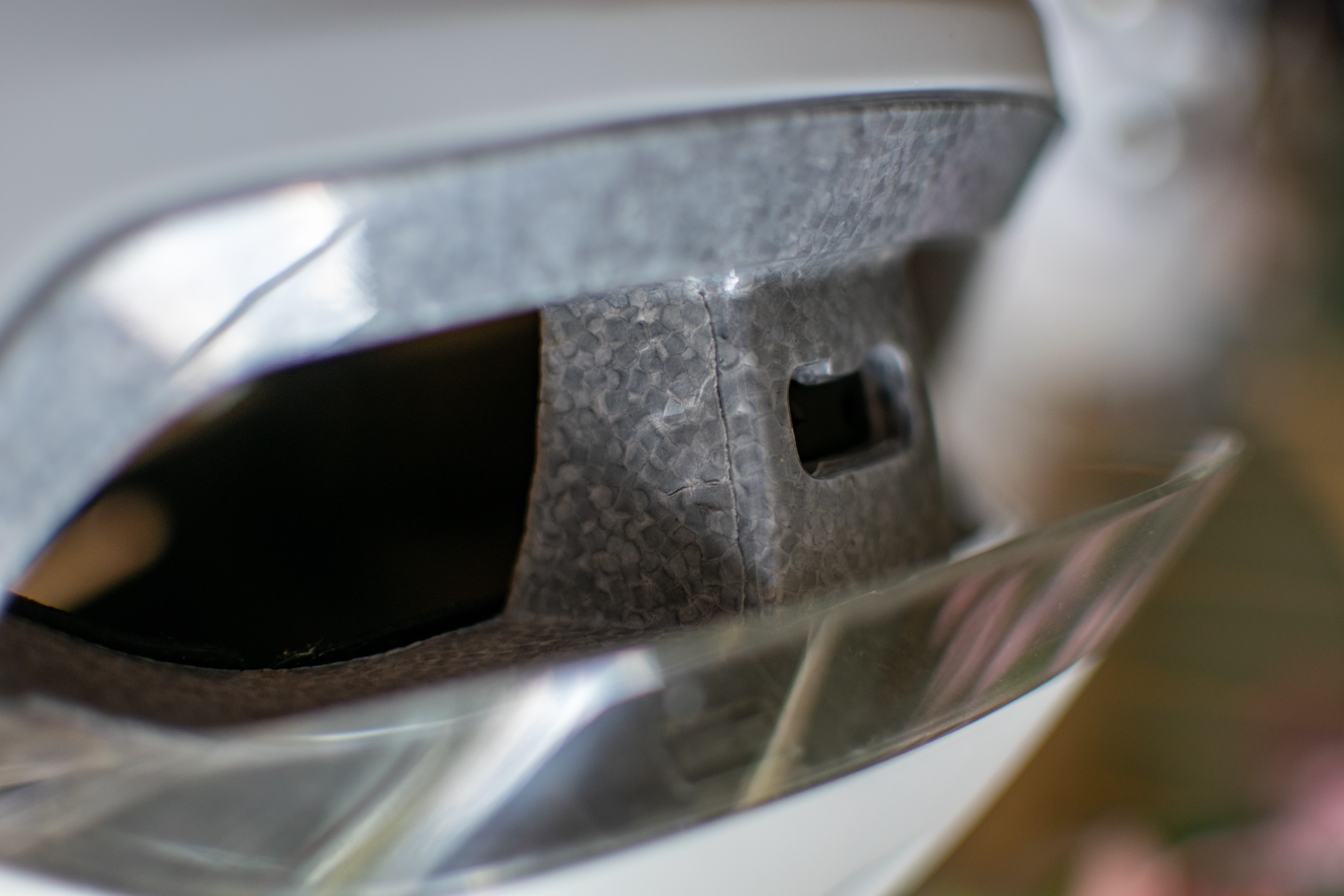
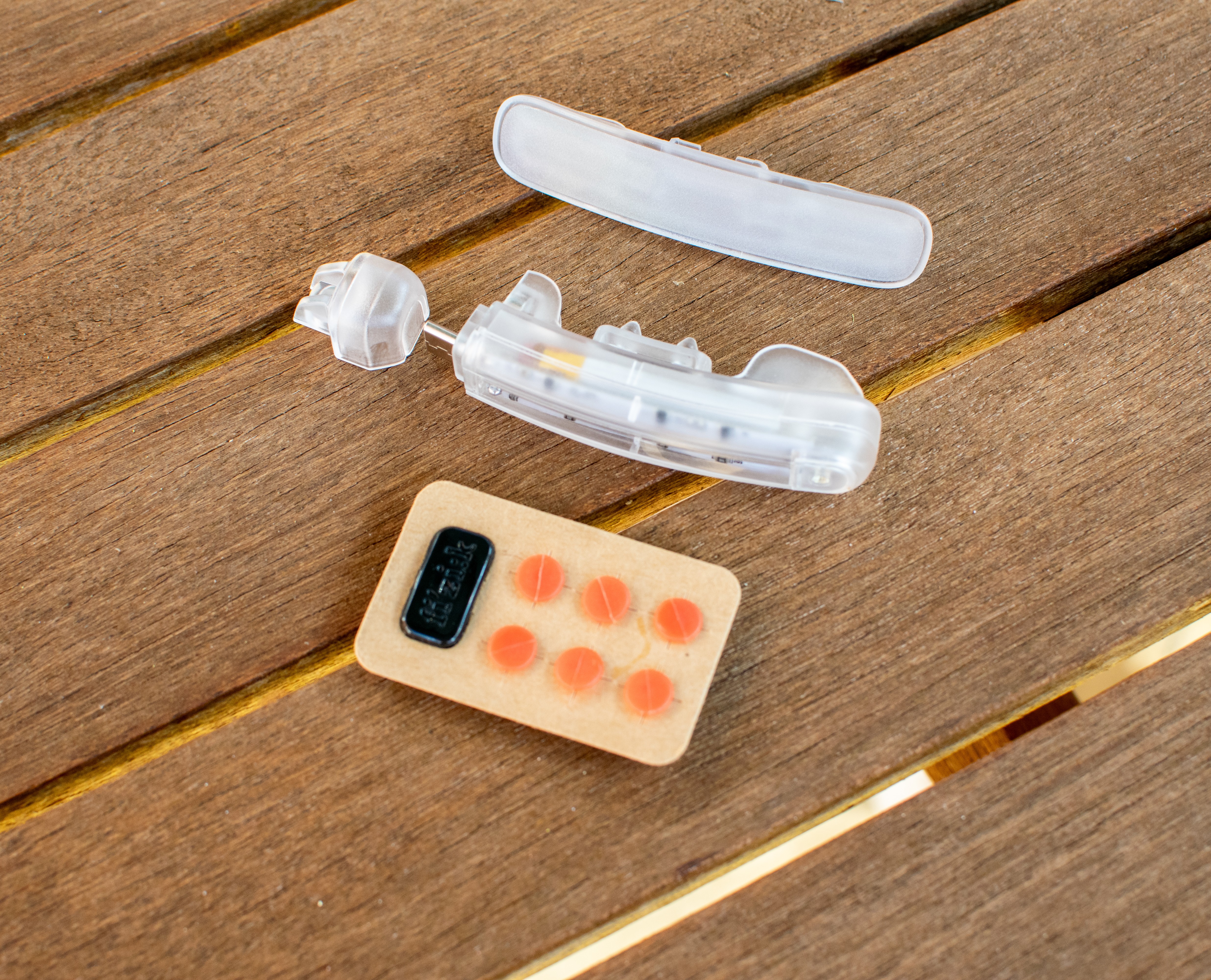
This is also my second Kudo Aero test unit. I returned the first at the brand's request after the plastic shell that encases the helmet's polystyrene material at the spot where the light/reflector fitting was damaged when I tried to swap out the light and reflector insert.
I found the light incredibly difficult to remove from the off; it was a very tight fit. This resulted in dents to the helmet shell and some damage to the plastic covering around the fitting. I asked the brand about this, and apparently it was as a result of the plastic being cut incorrectly and being around 1mm too thick.
The fit of the light and reflector was so tight I couldn’t not damage the helmet in removing them, and I was being as careful as I could.
Swapping between the light, reflector and blank insert on the second model is still tight, but it’s more pleasingly secure this time round, rather than being so tight I couldn't help but damage the helmet. The plastic overlap does seem to be the same though, and it looks like the same issue has occurred, but to a lesser extent.
It doesn’t cause any issues in use, and I can’t see users swapping regularly. For instance, I would probably run the light nearly always, and then switch it out for a race. But I do wonder if this is simply an isolated issue or a wider one. As it stands currently I have no issues and have been happy keeping the light fitted most of the time. It’s a nice thing to have integrated for riding home in the evenings.
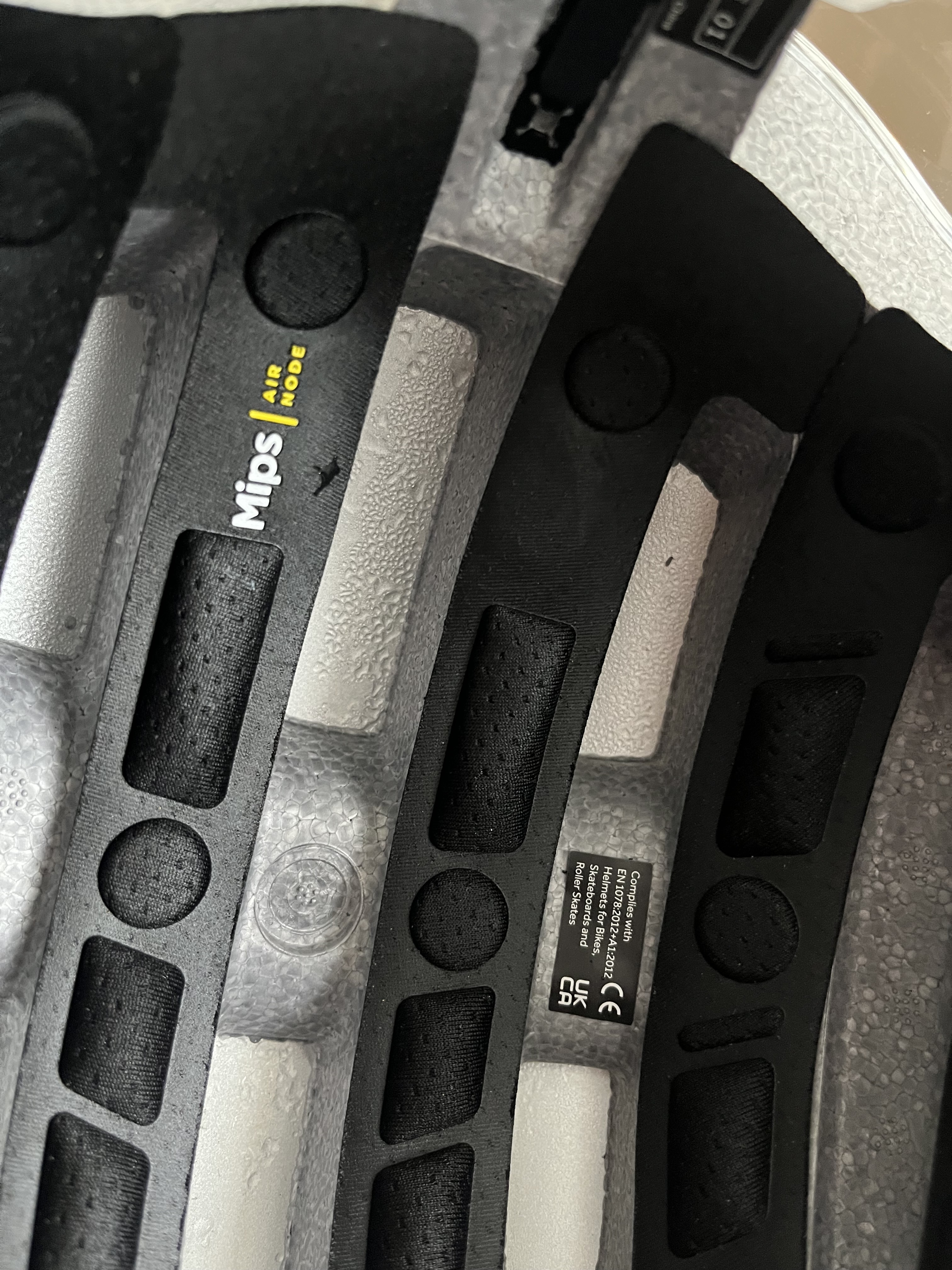

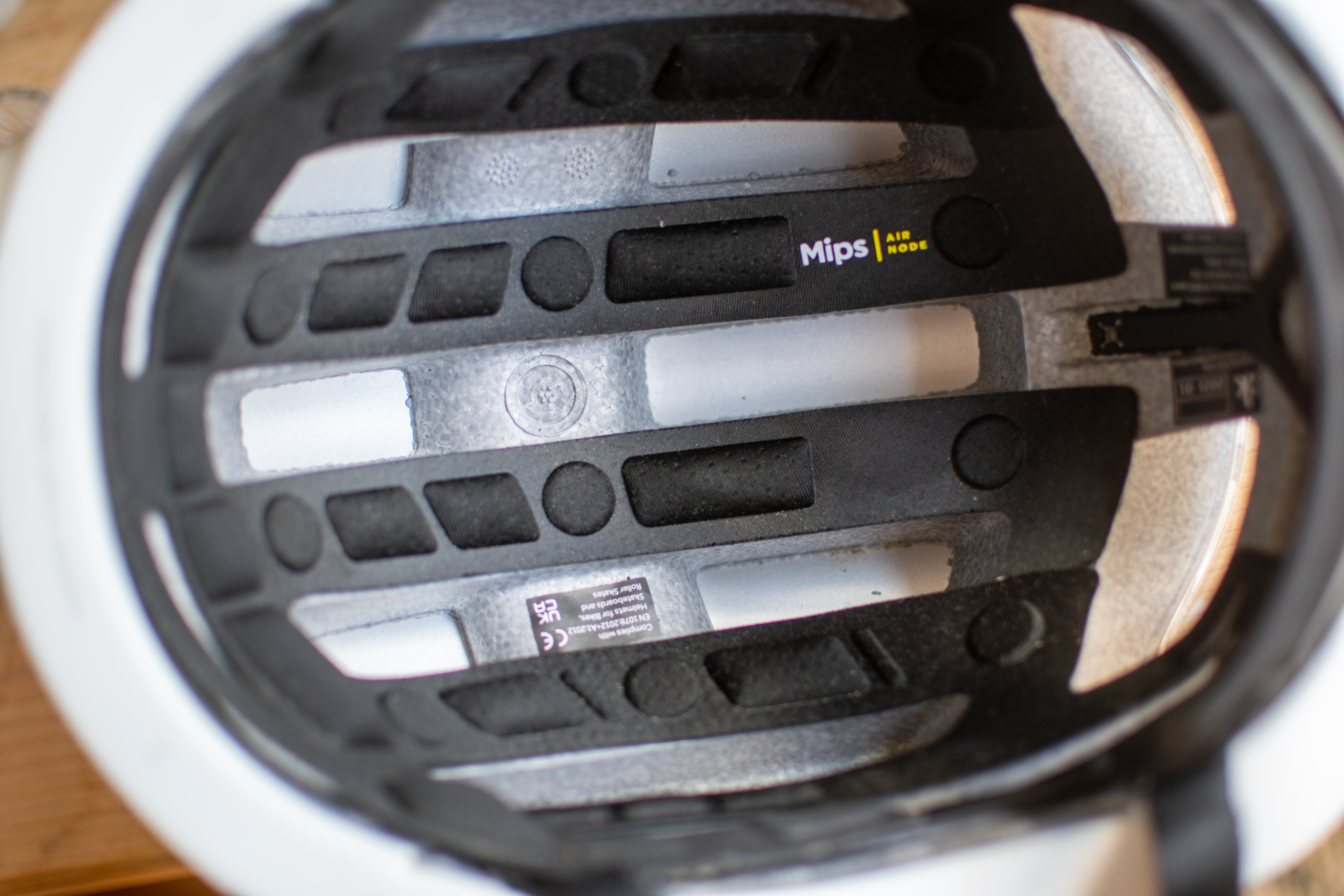
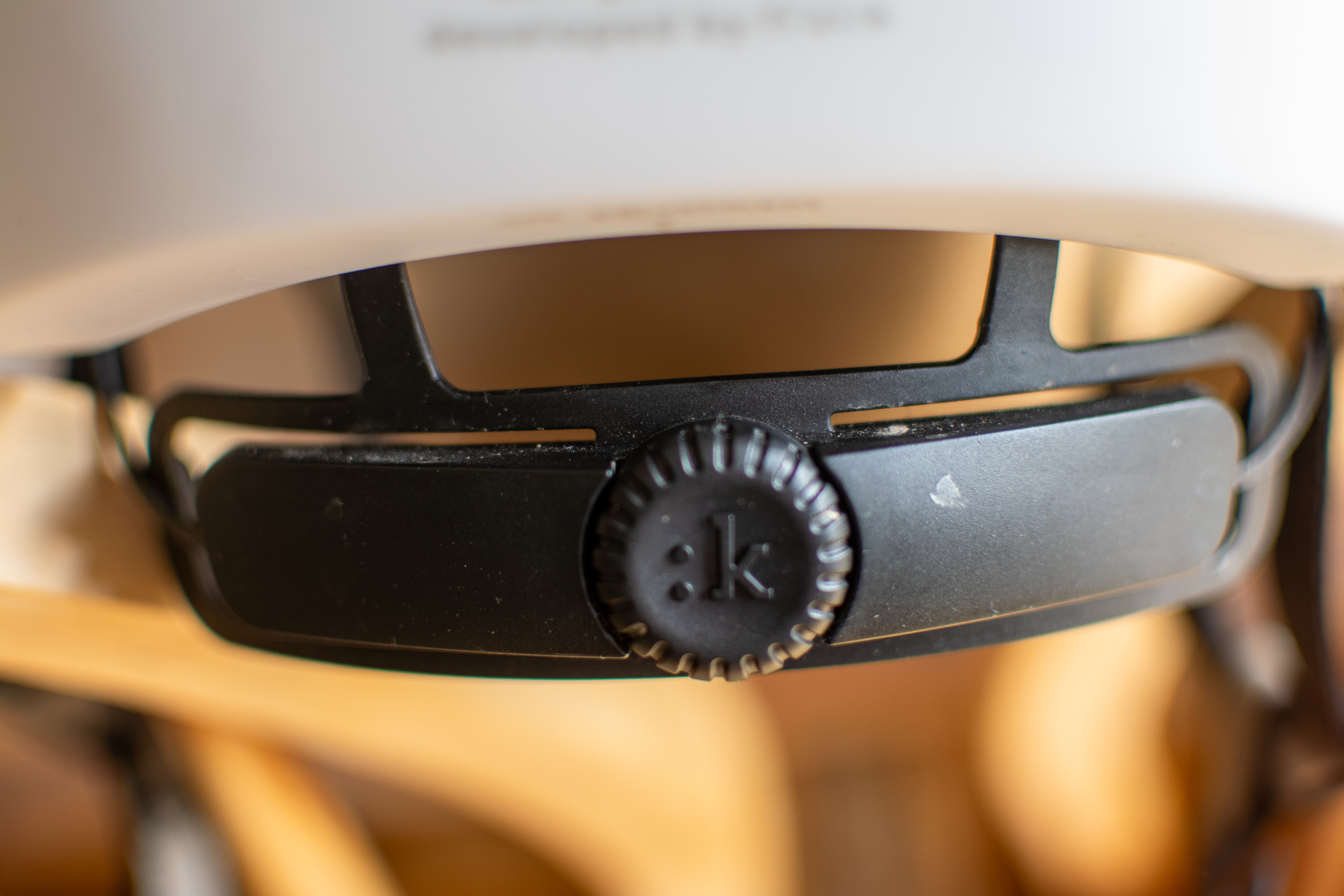
Value
This helmet has lots going for it: there’s the MIPS liner, a 5-star Virginia rating, stylish looks, and an included light and reflector. The light is also excellent and is something which will keep you more visible and hopefully safer in an ideal world.
However, at full RRP, this helmet is more cash than the S Works Evade 3, the quickest regular road helmet on the market. There’s the POC Procen, which was faster in our testing, but that model for me sits to one side of the regular road helmet category with its fairly extreme aero styling. Will the racers or riders looking for the quickest model (until tested) still go for the Evade 3?
If you're shopping for a genuinely fast helmet, you're going to need some data or do some wind tunnel testing to find out how quick this helmet is. Until then, I fear serious shoppers will choose other models in the hunt for speed, and since this is a dedicated aero helmet, this is how we must view this model.
Verdict
I like the Kudo Aero. It's comfortable, I like the styling, and I think the integrated light is brilliant. I've worn it for months on all but the hottest days. I genuinely hope the lack of venting from the cover and overall design makes it competitive. A bonus is that it also keeps you that little bit more comfortable in the rain.
The QC issue with the light fitting hasn't caused me a massive headache, I just hope it's a one-off. I will add to this review when I have more accurate data to add regarding how fast the helmet is.
If data and speed aren't a deal breaker for you, and you just need a stylish, safe helmet to ride in, the Kudo Aero is a good, solid option.
Design and aesthetics | A nice stylish design with a really well integrated light and good safety credentials, light fitment slot could be better executed | 7/10 |
Comfort | This helmet has been very comfortable for me. I have no hair so feel uncomfortable sections more keenly sometimes. Very good. | 9/10 |
Ventilation | There are only two small vents in the shell, far less than other helmets. For me this helmet is a little uncomfortable in the heat or on muggy days | 5/10 |
Safety | Good safety credentials with MIPS and Virginia Tech Score. Clip on rear light is also great | 9/10 |
Aero performance | As yet unknown, we plan to test soon and no figures from Fizik. It doesn't feel right to score this right now. | TBC |
Value | At the expensive end of the spectrum, the accessories and light add value, but we could do with knowing how quick it is | 7/10 |
Total | Row 6 - Cell 1 | 37/50 |

Tom joined the Cyclingnews team in late 2022 as a tech writer. Despite having a degree in English Literature he has spent his entire working life in the cycling industry in one form or another. He has over 10 years of experience as a qualified mechanic, with the last five years before joining Cyclingnews being spent running an independent workshop. This means he is just as happy tinkering away in the garage as he is out on the road bike, and he isn’t afraid to pull a bike apart or get hands-on with it when testing to really see what it’s made of.
He has ridden and raced bikes from an early age up to a national level on the road and track, and has ridden and competed in most disciplines. He has a keen eye for pro-team tech and enjoys spotting new or interesting components in the wild. During his time at Cyclingnews, Tom has already interviewed some of the sport's biggest names including Mathieu van der Poel, Tadej Pogačar and Alberto Contador. He's also covered various launches from brands such as Pinarello, Ridley, Specialized and more, tackled the Roubaix Challenge sportive aboard his own rim-brake Cannondale SuperSix Evo, tested over 20 aero helmets in the wind tunnel, and has created helpful in-depth buying advice relating to countless categories from torque wrenches to winter clothing.
You must confirm your public display name before commenting
Please logout and then login again, you will then be prompted to enter your display name.
